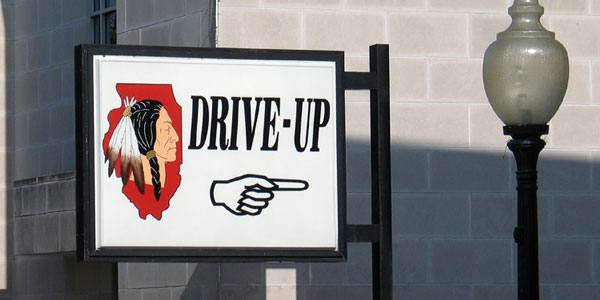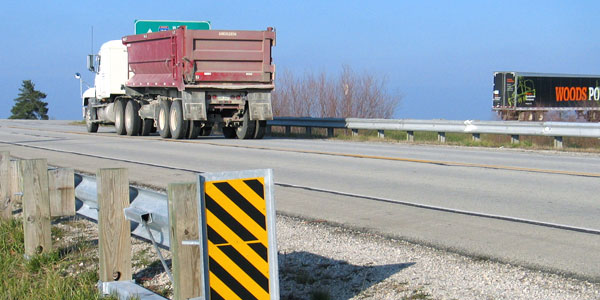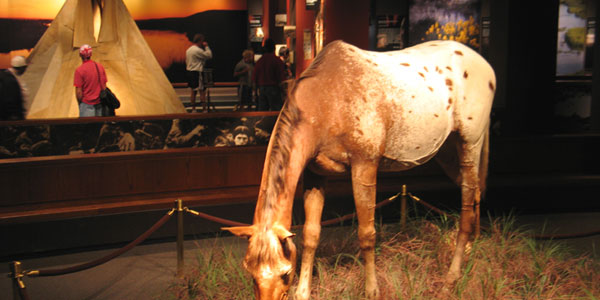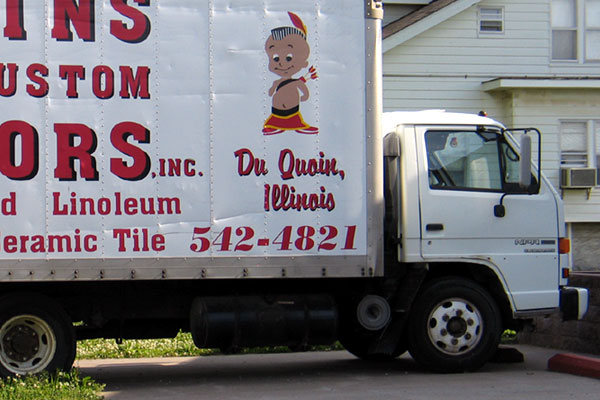
Introduction
Arguably the most enduring trope of American modernity, the cross-country road trip celebrates individualism and mobility as twinned features of a supposedly essential national character, conjuring intoxicating images of freedom, speed, and rock 'n roll, of finding one's own way in the world, and of open-ended personal discovery in an authentic, vast and empty continent. Often presented in 20th century literature and popular song as an east to west journey, the road trip can be seen as a compressed and personal recapitulation of the 19th century westward migration in search of opportunities laying just beyond the next horizon. However, this romantic picture conceals more than it reveals, and attending to what the landscape hides raises troubling questions for the contemporary road-tripper.
We propose making a retrospective journey through space and time, from the Los Angeles in the far West to New York City in the originary East, reverse-tracing Manifest Destiny from contemporary border wars through decades of Indian removal and back to the sale of the island that came to be called Manhattan. During this journey, we will follow - on the ground and on the airwaves - this history, foregrounding what the Cold War-era Interstate highway system effectively concealed with pure speed and McDonald's restaurants. Using a low-power radio transmitter, we will broadcast an ever-changing sound collage while traveling from the US-Mexico border to New York over a route tracing the present and past borders of the United States, the pathways worn by Indian removal, and the trails used by 18th and 19th century settlers headed west. Ending our journey in Manhattan, we will present the complete series of sound pieces in an evidentiary/informational installation that includes a guidebook to the trip along the way and other ephemera, such as photographs and maps.

Our vehicle will become a mobile radio station broadcasting sound pieces created on the journey between Los Angeles and New York City. The sound pieces will be responsive to the changing experience of travel while also considering histories which cannot so easily be read or experienced directly on the land. We will create one sound piece for each day of the journey, composing with pre-recorded material from found texts, sound gathered during stops made during the previous day's trip, and the live miking of the vehicle as we drive. The pre-recorded, found texts will be drawn from primary and secondary historical materials (particularly journals related to Indian removal and descriptions of early boundaries and roadways), news items complicating the image of western individualism, and words and sounds drawn from artistic and cultural interpretations of the west (movies, tv shows, paintings, and sculptures). Material recorded during the trip will reflect the search for contemporary evidence of these histories in the land while reflecting the ordinary pleasures and frustrations of contemporary automobile tourism. The live transmission of the sound of the car will touch on both the phenomenology and mechanical mediation of contemporary automobile travel.
The context-dependent content of the sound pieces will be rendered doubly contingent by the effect of the changing landscape on our radio signal. In vast, open, and sparsely populated areas, the sound pieces will be much easier to receive; in more populous, mountainous, or radio-serviced areas, the signal will not travel as far or as well. This ever-changing and usually inaudible sound asserts the existence of repressed histories while addressing the various ways both travel and the landscape traveled through are mediated by history, popular culture, and experience.
We understand "Driving East Through Indian Country" to consist primarily of the act of moving by car along a particular, intentional route between the California desert and New York while broadcasting sound pieces drawn from and reflecting upon the land through which we are traveling. As such, the project is largely an ephemeral, site-specific performance with an accidental direct audience: those who happen to driving nearby while tuned to the frequency on which we are broadcasting. We are also interested in this project as a proposition to a more intentional (and larger) audience.
We would like to present an informational and documentary installation in the form of a weatherproof kiosk (more permanent) or our vehicle (more temporary and needing to be staffed when open) fitted with mini listening stations to hear sample sound pieces from the journey, sort through ephemera, and take a zine-style guidebook. The guidebook will be created in advance of the journey from found texts, photos and documents revealing the routes to be driven, the histories traced, and the landscapes passed. The movable kiosk would have a clean, interpretive display look with listening stations and literature dispensers on two sides and large-scale map graphics on the remaining sides. The converted vehicle would reflect a makeshift aesthetic, with listening stations made from consumer electronics and home-made literature racks behind the seats and running along the walls. The vehicle would also hold the radio transmitter, antenna, and mixer used during the trip along with other evidence of the journey. The precise nature of this installation will depend on the conditions and duration of display (e.g whether open only during special events or permanently) and the funding and favors that can be secured from other sources.

The proposed project is inspired by and borrows its name from Daniel Richter's 2002 book, Facing East from Indian Country. Richter invites Americans to reverse the westwardly gaze of Manifest Destiny to re-consider our history:
"Yet if we shift our perspective to try to view the past in a way that faces east from Indian country, history takes on a very different appearance. Native Americans appear in the foreground, and Europeans enter from distant shores. North America becomes the "old world" and Western Europe the "new." Cahokia becomes the center and Plymouth Rock the periphery, and themes rooted in Indian country rather than across the Atlantic begin to shape the larger story. The continent becomes a place where diverse people had long struggled against and sometimes worked with one another, where societies and political systems had long risen and fallen, and where these ancient trends continued right through the period of colonization. The process by which one particular group composed of newcomers from Europe and their descendants--themselves a diverse and contentious lot--came to dominate the others becomes a much more complicated, much more interesting, much more revealing, if no less tragic, tale."
For this project, we take up Richter's proposition to re-envision US history while mobilizing the eastward gaze through the windshield of a car in order to consider and complicate the linked mythologies of westward expansion and the open road. The automobile is perhaps the single most symbolically potent artefact of modernity. A machine that collapses space and time and (apparently) severs dependence on communal resources and the non-human world, the automobile stood in sharp contrast with everything the rapidly disappearing Native American cultures were held to be: land-bound, unchanging, communalist, and synonymous with nature. Recent scholarship has explored the ways modern American whiteness was formed through the constitution of a Native American 'other' that was alternately authentic and natural, dangerous and wild, or noble and doomed. Modernization justified the policy of Native American extermination, and modernity was understood at the same time to be an explanation for their 'inevitable' disappearance. Subsequently, the institutionalization of the automobile forever altered the landscape from which Indians had been excised. Passing through this physical and conceptual territory behind the wheel of a car permits a unique vantage point from which to consider this continuing history.
Contemporaneously with but quite separately from critical research on Native American history and representation, there has been a recent surge in scholarship on 'automobility.' Generally, this work has sought to articulate a phenomenology of car travel or to link driving to the operational tactics of urban walking as explored by Michel de Certeau. These efforts often address individual experience and the performativity of space and movement while avoiding questions about the social and economic systems which both produce and are defined by automobility, not to mention its ecological and human casualties. Through this absence of institutional analysis, much contemporary theorizing of automobility has a romantic, congratulatory cast that reinforces the popular equation of 'car,' 'road' and 'freedom.' By failing to consider what John Urry has called "the system of automobility," these theorists unwittingly recapitulate other strategic blindspots in the American story: the individualism of the West contradicted by massive Federal subsidies and, most foundationally, the presence of other civilizations on the 'virgin continent.'
"Driving East Through Indian Country" unpacks some of the ways automobile culture, the imaginary Indian, Manifest Destiny, whiteness, and the sort of 'self expression' promised by radio and independent travel are linked and knotted. At the same time, it is deeply implicated in and indebted to the popular mythologies, theoretical currents, historical facts, and governmental policies it critiques, pointing toward the impossibility of ever exempting oneself from uncomfortable parts of one's culture. We believe the symbolic implications of "Driving East Through Indian Country" reverberate more broadly and can be used to reveal the way these cultural myths are interwoven and continue to structure contemporary experience.
